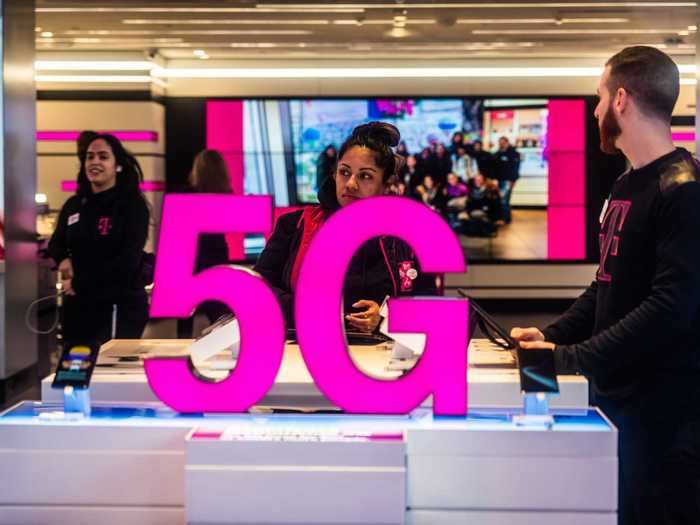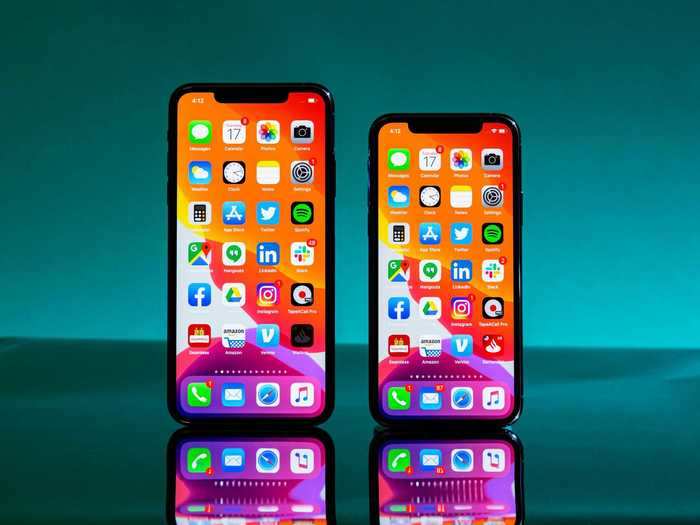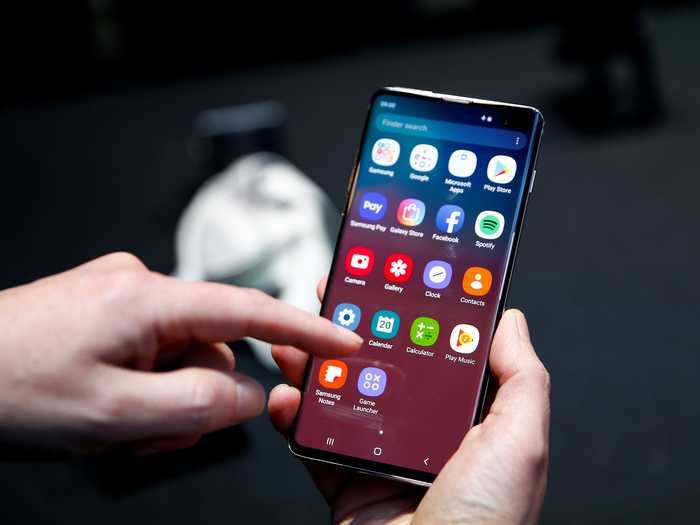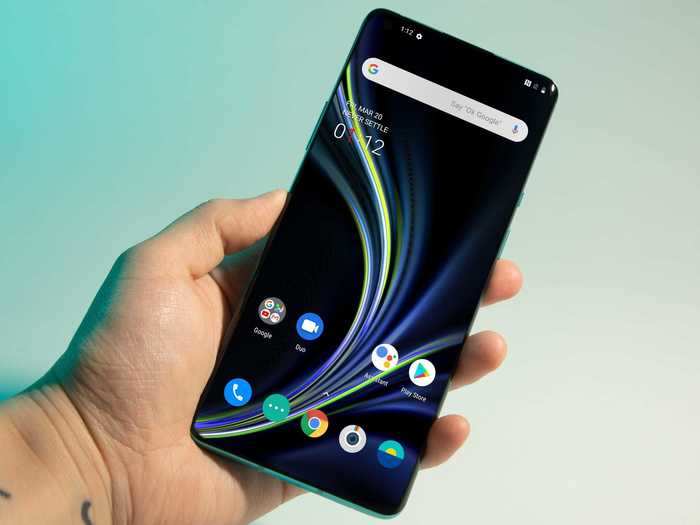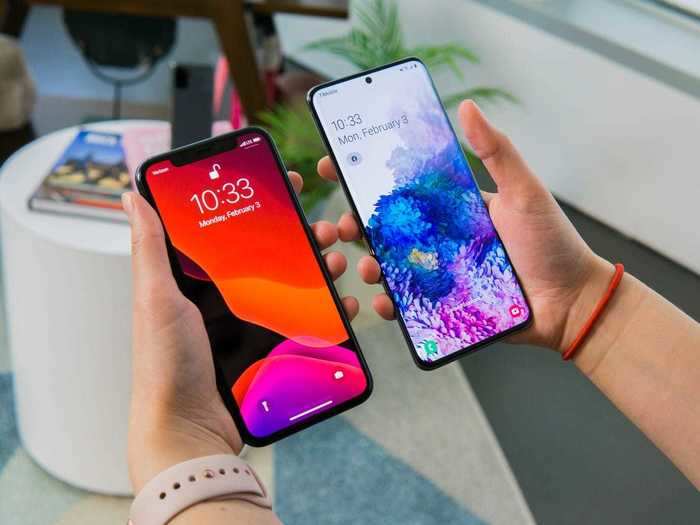Apple's iPhone 11 lineupHollis Johnson/Business Insider
- The iPhone 12 is expected to be a major upgrade that will bring new features like 5G compatibility, OLED screens across all models, and a new design.
- Some of these features, however, have already been available on competing Android devices for a while.
- Here's a look at some of the features we're expecting to see on the next iPhone, from screens with higher refresh rates to an in-screen fingerprint sensor, that are already available on Android.
The iPhone 12 is expected to represent one of the biggest overhauls to Apple's smartphone in years.
Reports suggest that the next-generation iPhone, which Apple is expected to reveal in September, will come with a number of significant updates, including the addition of 5G support, a refreshed design, and a new size option. The launch could represent a "once in a decade" opportunity for Apple, according to Wedbush Securities analyst Dan Ives, who predicts that 350 million iPhone owners worldwide could be in the window of an upgrade.
While many of the iPhone 12's rumored upgrades will be new to Apple's smartphone ecosystem, some of them are already available on competing Android devices.
Here's a look at the iPhone 12 features we're expecting to see that have already appeared on Android devices.
Apple's new iPhones will be the first to support 5G, coming after many Android phones already include 5G compatibility.
Customers at a T-Mobile store, with 5G signage in February 2020.
Alex Tai/SOPA Images/LightRocket via Getty Images
Among the biggest changes expected to arrive on the iPhone 12 is the addition of 5G. All of Apple's new iPhones in 2020 are expected to support 5G, according to TF International Securities analyst Ming-Chi Kuo, who has a notable track record when it comes to reporting on upcoming Apple product launches.
Kuo reported in late 2019 that all four of the new iPhone 12 models expected to debut this year will support these next-gen wireless networks, according to 9to5Mac and MacRumors.
Support for 5G will be new to the iPhone, but many Android phones have been offering it for quite some time. Samsung's Galaxy S20 lineup supports 5G, coming after the company launched the Galaxy S20 5G last year. Certain smartphones from OnePlus, LG, and Motorola also support 5G, and Google announced in early August that it plans to launch two 5G Pixel phones this year.
They're also all expected to come with OLED screens, a feature that's standard on many Android devices.
The iPhone 11 Pro and iPhone 11 Pro Max have OLED displays.
Hollis Johnson/Business Insider
All of Apple's new iPhones are expected to come with OLED screens, according to a note from Kuo reported by MacRumors last year. That differs from Apple's current lineup, in which only the high-end Pro models have OLED displays.
Compared to LCD screens, OLED displays generally offer better contrast, deeper black tones, and richer color.
OLED displays have become very common in the Android landscape, as they're found on premium phones like the Galaxy S20 as well as cheaper devices like the Google Pixel 4a and OnePlus 8.
There's a chance the new iPhones will have an in-screen fingerprint sensor, much like phones from Samsung and OnePlus.
FILE PHOTO: A journalist uses the new Samsung Galaxy S10 smartphone at a press event in London
Reuters
Apple might bring Touch ID back to the iPhone — but in a much different way. Bloomberg reported last year that Apple was readying in-screen fingerprint sensors for the iPhone that could be ready as early as 2020. Barclays analyst Blayne Curtis also made a similar prediction in May 2019, according to MacRumors.
Meanwhile, Android device makers like Samsung and OnePlus already offer phones with fingerprint sensors embedded in their displays. Samsung's Galaxy S10 lineup (except the S10e), Galaxy S20 family, and Galaxy Note 20 all feature in-display fingerprint scanners, while the OnePlus 7T, OnePlus 7 Pro, OnePlus 8, and OnePlus 8 Pro all have such a sensor as well.
Some new iPhone models may offer a screen with a higher refresh rate, a characteristic that started becoming more common on Android phones last year.
The OnePlus 8 Pro has a 120Hz refresh rate.
Crystal Cox/Business Insider
Apple may boost the iPhone's screen refresh rate up to 120Hz for faster, smoother scrolling, according to the YouTube channel Everything Apple Pro. But that feature is only expected to be available on Apple's high-end "Pro" models of the iPhone 12.
Higher refresh rates have become more common on Android devices over the past year, as devices like Samsung's Galaxy S20 lineup and Galaxy Note 20 Ultra, as well as the OnePlus 8 Pro and Asus ROG Phone II, all support 120Hz displays.
Apple's iPad Pro tablets also have a 120Hz display through a feature the company calls ProMotion, but this capability has yet to make it to the iPhone.
It could also have a smaller notch cutout above the display, much like recent Android phones.
Antonio Villas-Boas/Business Insider
Apple is likely to shrink the size of the notch cutout near the top of the iPhone's display with this year's model, according to Bloomberg. The company hopes to eventually remove the notch entirely.
The notch cutout enables Apple to keep features like the front-facing camera and Face ID while still removing much of the border around the iPhone's screen.
Many Android device makers have made an effort to reduce the size of the notch cutout on their respective devices in recent years, too. Samsung's Galaxy S10 and Galaxy S20 lineup have a hole punch-shaped cutout that's more discreet than the iPhone's notch. Google's Pixel 4a also has a small cutout for the front camera rather than a wider notch like the one found on the iPhone.

